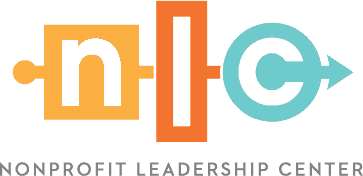Ask any nonprofit leader what’s keeping them up at night, and chances are retaining staff is high on their list. Although 87 percent of employers say improving employee retention is a critical priority, more than three in four nonprofits (81%) lack a formal retention strategy. Creating a robust employee retention plan may seem daunting, but there are steps you can take today to ensure your most important asset — your people — feels valued and committed to your organization.
3 Tips for Retaining Staff
Author, speaker and Nonprofit Leadership Center trainer Kathy McDonald has two decades of experience helping individuals and teams leverage their strengths for organizational success. Here are three of her recommendations for increasing employee satisfaction and retaining staff.
1. Get on board with onboarding
According to research by the Aberdeen Group, 86 percent of employees decide to stay or leave a new organization within the first six months. New hires who go through a formal onboarding process are significantly more likely to stay with their organization for three or more years. But effective onboarding is more than just a welcome lunch on their first day. You need an intentional, informative and inspiring process that builds their knowledge and confidence. Here are some key questions to think through to make their first days first-rate:
- How will you help new hires develop the industry knowledge they need to be successful?
- What resources and role-playing opportunities will you provide to help new hires tell your story in a clear, concise and compelling way that connects with
constituents and donors? - What short- and long-term expectations do you have for your new employees?
- What are the peer relationships — both inside and outside your organization — that will be important? How can you help facilitate one-on-one conversations to build these connections and trust?
- How will you reinforce organizational education and inspiration throughout the first year, so that learning doesn’t stop after the first few weeks on the job?
2. Equip new leaders to lead
Becoming a new manager is an exciting time in a person’s career advancement, but it can also bring anxiety and organizational risk. Gallup research shows that 70 percent of team member disengagement is driven by dissatisfaction with their manager. Nonprofit organizations must commit to helping new managers obtain the skills they need to supervise and motivate others. Our management classes help new managers transition into their important roles, building skills in delegating, motivating teams and managing projects across a team.
3. Avoid surprises
Clear communication is critical to ensure staff understands expectations, feel part of a team and can have positive and productive conversations to achieve success. This includes providing honest, constructive feedback to avoid underperformance and solve problems that may arise. It also includes enforcing deadlines and holding team members to a standard of quality, so everyone is aware of the expectations they’re working toward. If leaders avoid conversations because of potential conflict that may arise rather than building the skills to effectively deal with different points of view, they do so at the risk of their organization’s excellence and employees’ long-term growth and satisfaction.
Join Us for an Upcoming Nonprofit Training Class
If being a more intentional leader and better retaining staff are part of your goals {Pssst: They should be for every nonprofit leader!], join NLC for one of our upcoming training classes. You can see the complete calendar of events here and our leadership certificates here.

